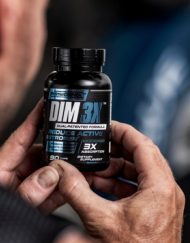How to Relieve Tooth Pain from Invisalign

Invisalign has revolutionized the world of orthodontics by offering a more discreet and comfortable way to straighten teeth compared to traditional braces. However, like any orthodontic treatment, Invisalign may cause some discomfort, particularly in the form of tooth pain. If you’re experiencing tooth pain while wearing Invisalign aligners, fret not! In this comprehensive guide, we’ll explore various methods to relieve tooth pain from Invisalign, ensuring your journey to a beautiful smile remains as pain-free as possible.
Contents
- 1 Understanding Invisalign Tooth Pain (H2)
- 2 How to Relieve Invisalign Tooth Pain (H2)
- 3 Conclusion (H2)
- 4 ADD/ADHD (2)
- 5 Anabolic Steroids (11)
- 6 ANTI ANXIETY (1)
- 7 Anti-Estrogens (1)
- 8 Antibiotics (1)
- 9 Birth Control (1)
- 10 buy Online (5)
- 11 COUGH SYRUP (2)
- 12 DEPRESSANTS AND ANXIETY (14)
- 13 Hallucinogens (5)
- 14 INJECTABLE STEROIDS (1)
- 15 MARIJUANA AND HASHISH (1)
- 16 nervous-stimulants (1)
- 17 OPIOIDS (15)
- 18 Pain Reliever (6)
- 19 Sleep & Insomnia (1)
- 20 STIMULANTS (10)
- 21 WEIGHT LOSS (1)
Must Read: The World’s Leading SilkRoad Black Pharmacy: Empowering Access to Medications
Understanding Invisalign Tooth Pain (H2)
Before delving into remedies, it’s essential to understand why tooth pain may occur during Invisalign treatment. Invisalign works by gradually shifting your teeth into their desired positions, and this process can put pressure on your teeth and gums. This pressure is a sign that the aligners are doing their job, but it can lead to discomfort.
Types of Tooth Pain (H3)
Tooth pain from Invisalign can manifest in different ways, including:
- Pressure Pain: This is the most common type of discomfort associated with Invisalign. It feels like a dull ache or pressure on the teeth and is often experienced when you switch to a new set of aligners.
- Sharp Pain: Some individuals may occasionally experience sharp, shooting pains, especially when they remove their aligners. This is usually normal and should subside.
How to Relieve Invisalign Tooth Pain (H2)
Now, let’s explore effective strategies to alleviate tooth pain caused by Invisalign aligners.
1. Over-the-Counter Pain Relievers (H3)
One of the simplest ways to manage tooth pain is by taking over-the-counter pain relievers like ibuprofen or acetaminophen. Always follow the recommended dosage instructions.
2. Orthodontic Wax (H3)
Orthodontic wax can be your best friend during Invisalign treatment. Apply a small amount to any sharp edges or rough spots on your aligners to prevent them from irritating your gums and lips.
3. Cold Compress (H3)
A cold compress can help reduce inflammation and numb the area, providing temporary relief from tooth pain. Apply it to the outside of your mouth for 15-20 minutes as needed.
4. Chewing on a Cold Teething Ring (H3)
Similar to a cold compress, chewing on a cold teething ring can soothe sore gums and teeth. Make sure it’s clean and safe to use.
5. Orthodontic Silicone (H3)
Orthodontic silicone, like dental silicone strips or putty, can be applied to the edges of your aligners for added cushioning and comfort.
6. Follow Your Orthodontist’s Instructions (H3)
Always adhere to the instructions provided by your orthodontist. This includes wearing your aligners for the recommended duration each day and changing them as instructed.
7. Stay Hydrated (H3)
Drinking water can help keep your mouth and gums hydrated, reducing friction and discomfort caused by dryness.
Conclusion (H2)
Experiencing tooth pain during Invisalign treatment is common, but it shouldn’t deter you from achieving your dream smile. By following these tips and seeking guidance from your orthodontist, you can effectively manage and relieve tooth pain associated with Invisalign. Remember that some discomfort is normal as your teeth adjust, but it’s a sign that the treatment is progressing.
FAQs (H2)
1. Is it normal to have tooth pain with Invisalign?
Yes, it’s normal to experience some tooth pain or discomfort during Invisalign treatment, especially when you switch to a new set of aligners. This is a sign that the aligners are working to move your teeth.
2. Can I take pain relievers every day while using Invisalign?
It’s best to follow the recommended dosage instructions for over-the-counter pain relievers. If you find that you need them frequently, consult your orthodontist for advice.
3. How long does tooth pain from Invisalign last?
The duration of tooth pain can vary from person to person. Typically, it should subside within a few days of switching to a new set of aligners.
4. Can I remove my Invisalign aligners if the pain is too severe?
You should always follow your orthodontist’s instructions regarding the wear and removal of Invisalign aligners. Removing them without proper guidance can affect the treatment’s effectiveness.
5. Are there any long-term risks associated with Invisalign tooth pain?
In general, Invisalign tooth pain is temporary and shouldn’t result in long-term issues. However, if you have concerns, it’s essential to discuss them with your orthodontist.
Look Our Categories:
-
ADD/ADHD (2)
-
Anabolic Steroids (11)
-
ANTI ANXIETY (1)
-
Anti-Estrogens (1)
-
Antibiotics (1)
-
Birth Control (1)
-
buy Online (5)
-
COUGH SYRUP (2)
-
DEPRESSANTS AND ANXIETY (14)
-
Hallucinogens (5)
-
INJECTABLE STEROIDS (1)
-
MARIJUANA AND HASHISH (1)
-
nervous-stimulants (1)
-
OPIOIDS (15)
-
Pain Reliever (6)
-
Sleep & Insomnia (1)
-
STIMULANTS (10)
-
WEIGHT LOSS (1)
Must Read: Buy Magic Mushrooms Psilocybin Online: Navigating the Landscape of Psychedelic Experiences























Recent Comments